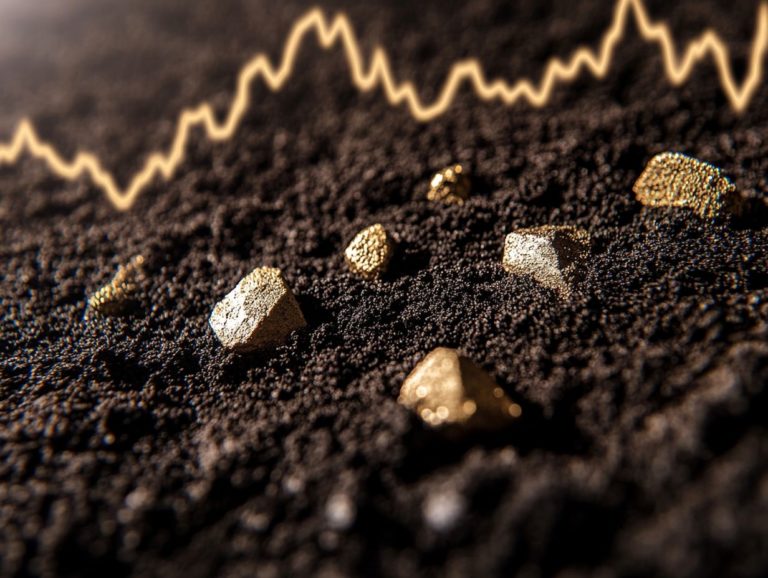Understanding Geopolitical Impact on Metals
Geopolitics plays a vital role in the metal industry. It affects resource availability, pricing, and trade dynamics.
As global tensions rise and trade policies evolve, the implications for metals like gold, steel, and aluminum can be significant. This article explores the key factors driving these geopolitical influences, including natural resources, political instability, and trade relations.
We will examine real-world case studies and effective strategies for managing geopolitical risks, offering indispensable insights for industry stakeholders.
Contents
- Key Takeaways:
- Factors Influencing Geopolitical Impact on Metals
- Case Studies: Geopolitical Impact on Specific Metals
- Strategies for Managing Geopolitical Risk in the Metal Industry
- Frequently Asked Questions
- What is the relationship between geopolitics and the metal industry?
- How do geopolitical factors affect the prices of metals?
- Which metals are most affected by geopolitical events?
- How can international trade policies impact the metal industry?
- What are some examples of past geopolitical events that have affected the metal industry?
- How can investors use geopolitical analysis to make informed decisions about metal investments?
Key Takeaways:
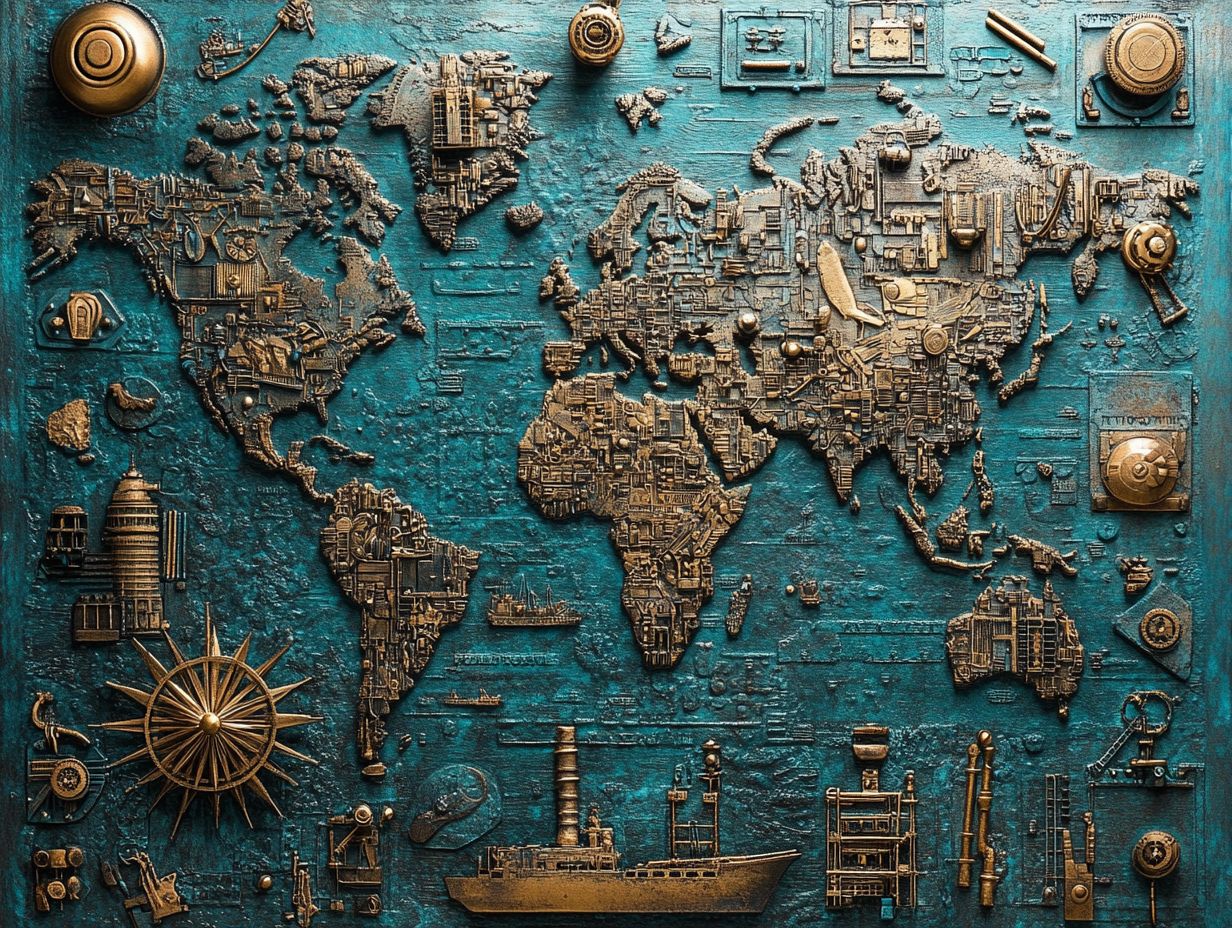
- Understanding geopolitics is crucial for the metal industry as it affects supply, demand, and prices.
- Natural resources, trade policies, and political instability are key factors influencing geopolitical impact on metals.
- Strategies such as diversification, hedging, and collaboration can help manage geopolitical risk in the metal industry.
Defining Geopolitics and Its Role in the Metal Industry
Geopolitics encompasses the intricate interplay of geography, economics, and politics in shaping the relationships between nations. This dynamic not only molds the strategic landscape of global industries but also profoundly influences the metal industry, essential for economic stability and growth.
Geopolitical factors ranging from trade policies and sanctions to the rise of the BRICS alliance introduce both challenges and opportunities for major players like the United States and countries within the European Union.
These geopolitical dynamics directly impact metal prices and the mining capabilities of various nations. When key exporters face restrictions, the resulting scarcity can trigger price surges that ripple through related industries. As the world shifts toward ecological sustainability, the demand for specific metals vital for green technologies such as lithium and cobalt increases the stakes in international negotiations.
As the digital transition unfolds, it necessitates innovative sourcing and production methods. In this changing economy, readiness to adapt swiftly to sudden geopolitical shifts is crucial, balancing ecological imperatives with economic viability.
Factors Influencing Geopolitical Impact on Metals
Several key factors significantly influence the geopolitical impact on metals, including geopolitical tensions, resource nationalism, and evolving trade policies that continually reshape the economic landscape.
Understanding these elements is essential for you as a stakeholder in the metal industry, enabling navigation of the complexities presented by supply chain disruptions and market volatility.
This is particularly crucial in the context of critical minerals, which are vital for electric vehicles and clean energy initiatives.
Natural Resources and Trade Policies
Natural resources are the backbone of the metal industry. Proper management of these resources and trade policies is essential for access to global markets and competitiveness. The relationship between natural resources and trade policies significantly affects your consumption and pricing of metals, particularly as nations adopt new regulations and standards in response to ecological and economic challenges.
In this complex landscape, the European Union’s regulatory framework wields substantial influence over trade dynamics, often establishing benchmarks that other countries aim to emulate. Similarly, the BRICS alliance comprising Brazil, Russia, India, China, and South Africa provides a unique perspective on natural resource management, promoting sustainable practices while competing for a strong foothold in the global metal market.
For both regions, forging strategic partnerships and making targeted investments becomes crucial in optimizing extraction methods and ensuring resilience in the supply chain. This evolving relationship not only affects metal prices but also fosters innovations that can pave the way for more sustainable mining practices.
Political Instability and Conflicts
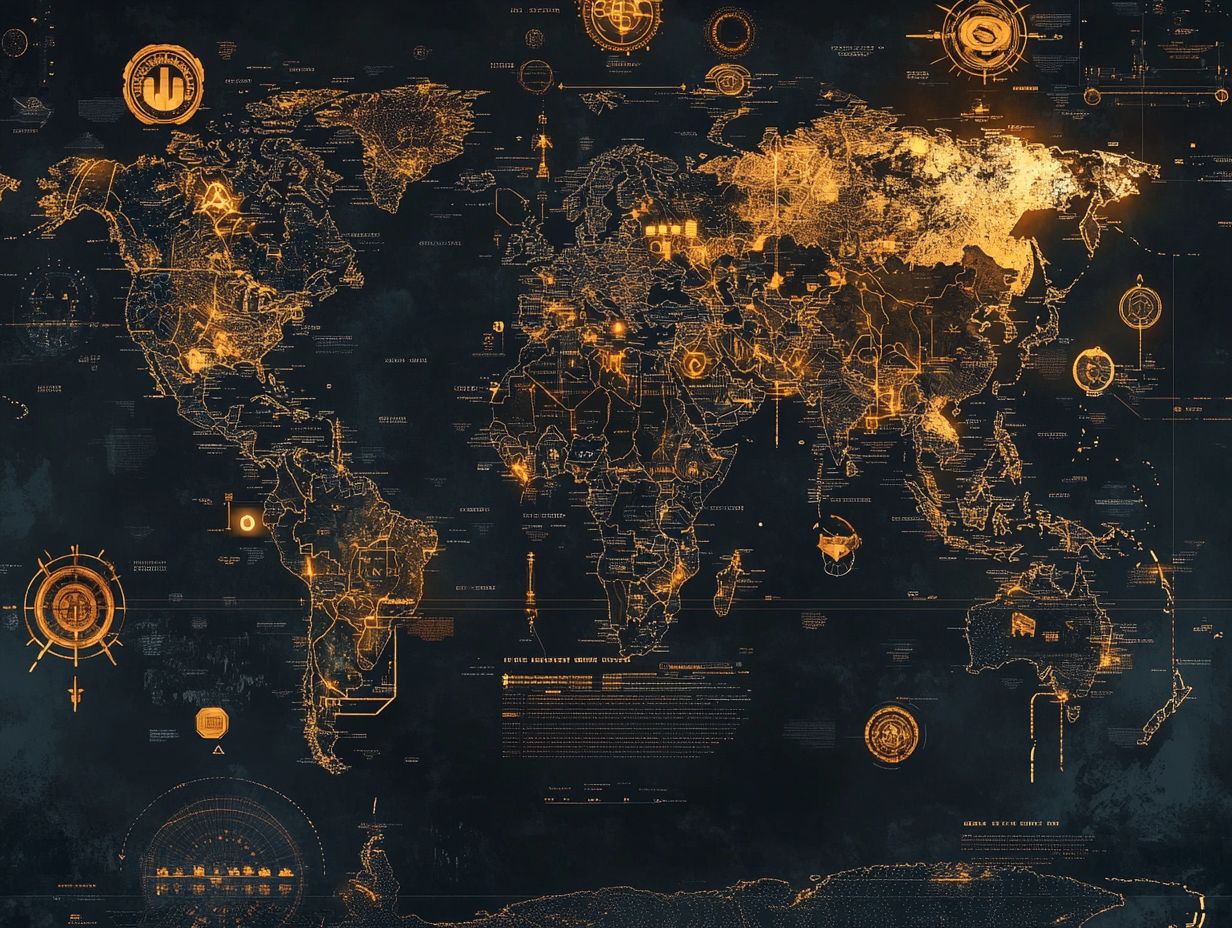
Political instability and conflicts carry significant effects on the metal industry, especially in regions rich in natural resources. The War in Ukraine vividly demonstrates how geopolitical tensions can lead to sanctions that cause supply shortages and price fluctuations in metals. This impacts the mining abilities of the nations involved.
For example, consider the U.S. sanctions against Russian metals. These measures have disrupted the global supply chain, given that Russia is a key exporter of aluminum, nickel, and palladium. Countries that rely on these metals now face rising costs and procurement uncertainties.
Further complicating the global landscape is the turmoil in South America, where disputes over mining rights and environmental regulations continue. These disruptions drive up metal prices and create cascading effects throughout the economy, affecting everything from manufacturing to construction. This situation highlights just how connected our global economy is.
Case Studies: Geopolitical Impact on Specific Metals
By examining case studies of specific metals, you can uncover the nuanced geopolitical impacts that shape their markets and industries. Focus on gold, oil, steel, and aluminum.
Each metal has its own unique vulnerabilities and opportunities, influenced by regional dynamics, resource availability, and international relations. This complexity requires tailored strategies that address the specific challenges and prospects within the mining and metals sector.
Gold and Oil
Gold and oil are prime examples of commodities significantly influenced by geopolitical tensions. They are often regarded as safe havens during times of instability. Price fluctuations stem from various factors, including supply chain disruptions and international trade agreements that affect their availability.
As inflation continues to rise, you may feel drawn to gold and oil, seeking refuge from the tumultuous market landscape. Recent sanctions on oil-rich nations have created supply constraints, driving prices even higher.
The pursuit of energy security is prompting countries to reevaluate their energy strategies. This underscores the need for reliable sources amid geopolitical uncertainty. These dynamics emphasize the critical role of commodities in portfolio diversification and highlight evolving investment strategies that adapt to current market trends. As global tensions escalate, understanding these intricacies becomes essential for both seasoned investors and newcomers.
Steel and Aluminum
The steel and aluminum markets are particularly sensitive to geopolitical shifts. Recent sanctions and trade policies have introduced considerable market volatility. These metals are vital across various industries, including construction, automotive, and energy, making their pricing and availability critical for economic stability.
As nations impose trade restrictions, supply shortages create ripple effects that influence production costs and overall market dynamics. Moreover, energy forecasts are crucial; fluctuations in energy prices can directly affect the operational expenses of mining and smelting operations.
Partnerships among mining companies are becoming increasingly important as they navigate these turbulent waters and secure stable sources of essential materials. Businesses must pay attention to current market trends and consider how geopolitical tensions might reshape their supply chains and long-term viability.
Strategies for Managing Geopolitical Risk in the Metal Industry
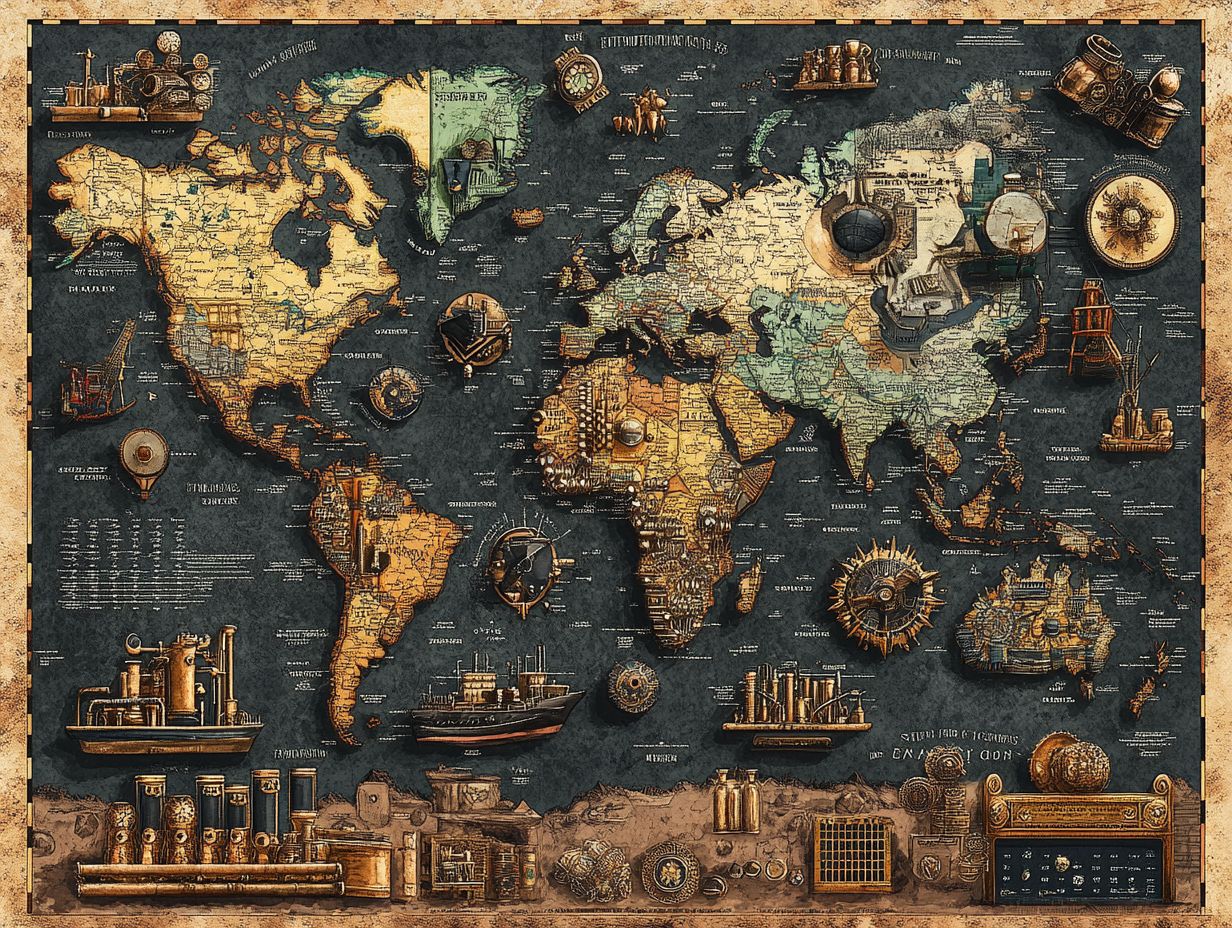
Managing geopolitical risk in the metal industry demands a sophisticated, multi-faceted approach. Employ strategies such as diversification and hedging to shield your operations from potential losses.
Prioritizing collaboration with international partners and stakeholders is crucial. This enables you to adeptly navigate the intricate landscape influenced by resource nationalism and market fluctuations.
Diversification and Hedging
Diversification and hedging are crucial strategies in the metal industry. Protect yourself against geopolitical risks and market concentration effectively.
By spreading your investments across various regions and materials, you can significantly reduce exposure to adverse events that might impact specific metals, thereby stabilizing your operations.
- For example, if you re heavily invested in copper, explore opportunities in aluminum and lithium.
- Tap into the surging demand for electric vehicles and renewable energy technologies.
- Implement hedging techniques like futures contracts to manage price volatility.
This multi-faceted approach not only safeguards you against market fluctuations but also positions you to capitalize on emerging trends, such as the increasing importance of critical minerals.
The strategic use of these methods enhances your resilience and keeps you agile in exploring new investment avenues in a rapidly evolving marketplace.
Collaboration and Negotiation
Collaboration and negotiation are essential in managing geopolitical risks in the metal industry. They allow you to forge strong partnerships that ensure resource security and stability.
By actively engaging with governments, local communities, and other industry players, you can effectively navigate regulatory landscapes and enhance your supply chain management.
Effective collaboration helps mitigate risks associated with resource nationalism while opening the door to investment opportunities that strengthen energy security.
A prime example is the collaboration between a major mining firm and an African government to develop copper resources. This showcases how strategic alliances can yield mutual benefits and bolster economic resilience.
These successful partnerships underscore the significance of a cooperative approach in tackling the complexities of geopolitical challenges.
Frequently Asked Questions
What is the relationship between geopolitics and the metal industry?
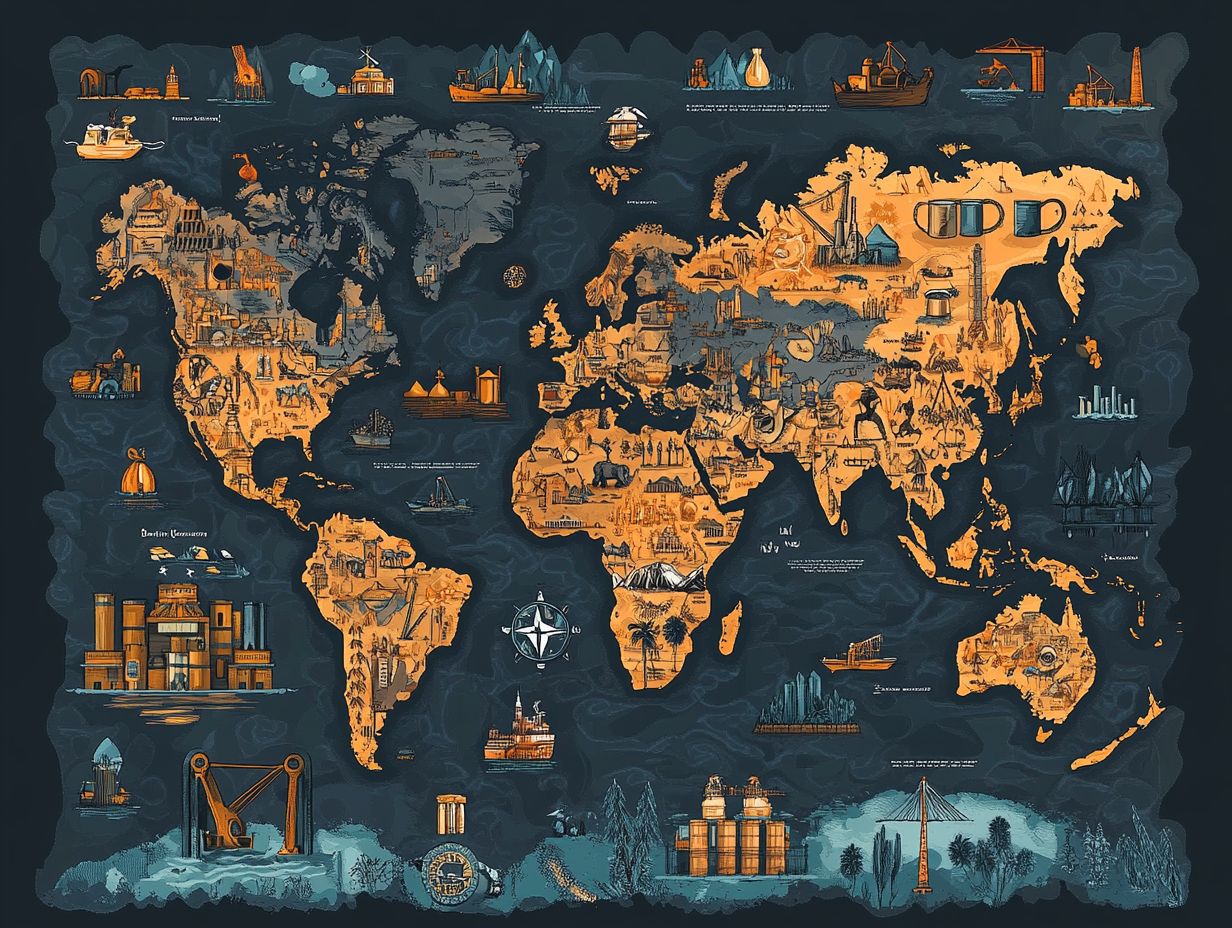
Geopolitics refers to the impact of political, economic, and social factors on a country or region. In the metal industry, geopolitical events such as trade policies, wars, and sanctions can greatly affect the supply and demand for metals.
How do geopolitical factors affect the prices of metals?
Geopolitical tensions can cause fluctuations in the prices of metals due to changes in supply and demand. If a major producer of a certain metal is impacted by political instability, it could lead to a decrease in supply and an increase in prices.
Which metals are most affected by geopolitical events?
Some of the most commonly affected metals include gold, silver, and copper. These metals are often used as safe-haven assets, meaning investors turn to them during times of political and economic uncertainty, causing their prices to rise.
How can international trade policies impact the metal industry?
International trade policies, such as tariffs and quotas, can have a significant impact on the metal industry. These policies can restrict or promote the import and export of metals, affecting their availability, prices, and trade relationships between countries.
How prepared are you to tackle these challenges?
What are some examples of past geopolitical events that have affected the metal industry?
The 2008 global financial crisis, the US-China trade war, and Brexit significantly impacted the metal industry.
These events caused metal prices to fluctuate and affected global supply chains.
How can investors use geopolitical analysis to make informed decisions about metal investments?
Investors should look at political events to spot risks and opportunities in the metal market.
By keeping track of these events, they can make smarter choices about when to buy or sell metals.













